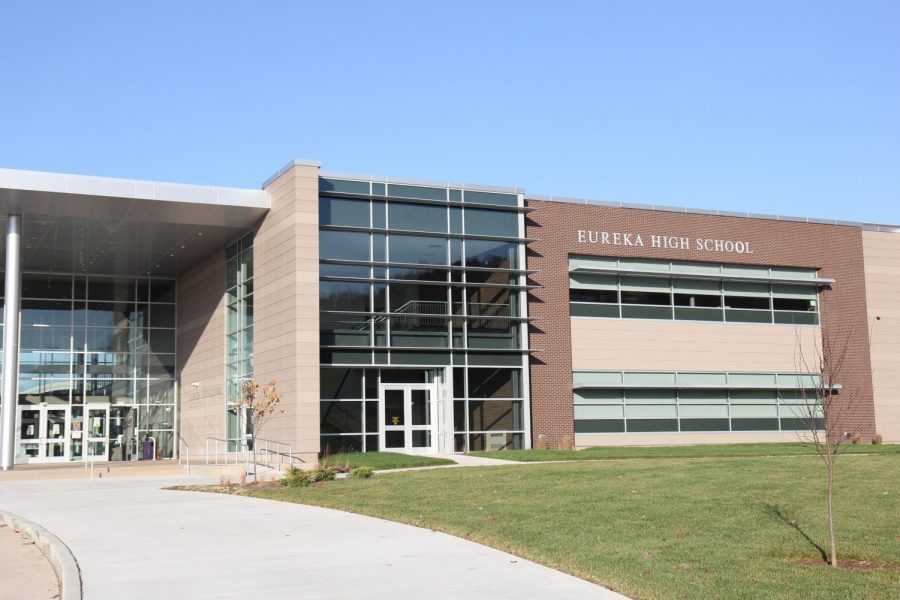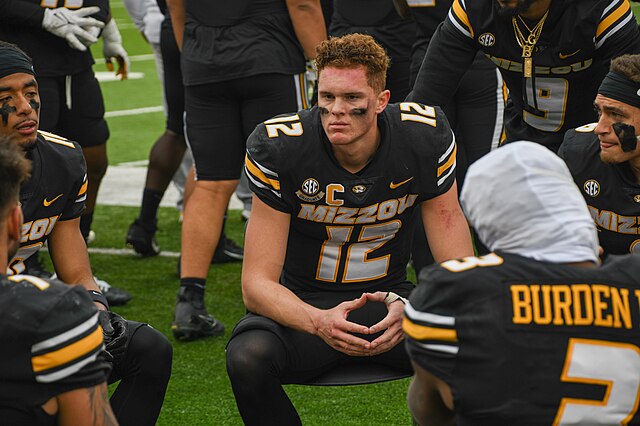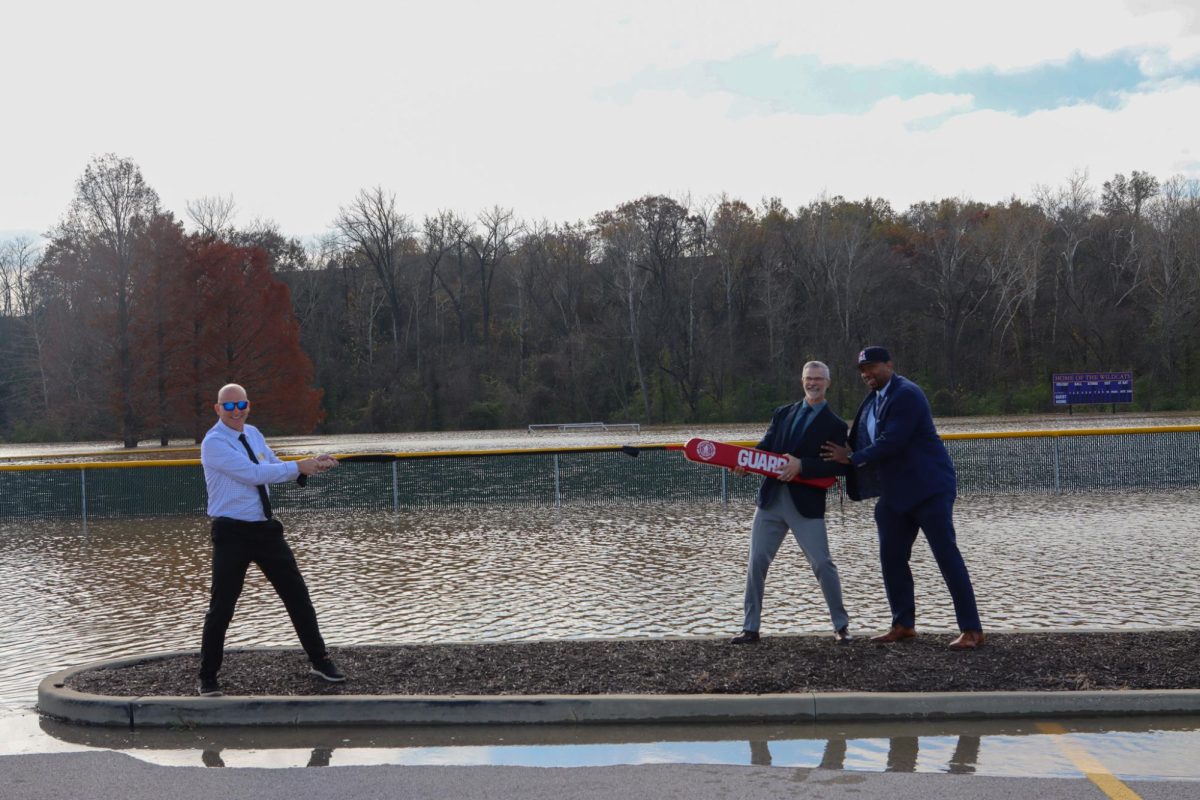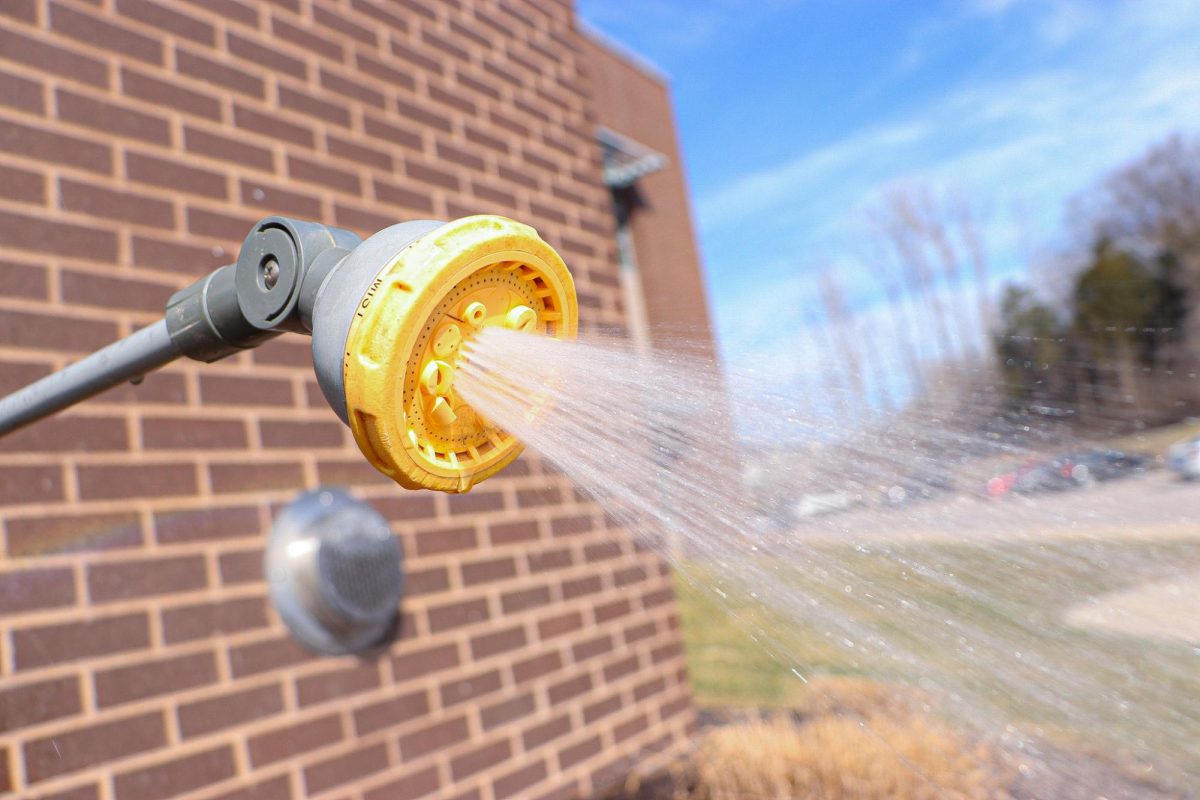Over the last 40 years, Eureka has experienced several tragic floods that have affected much of the town. Massive flooding was recorded in 1982, and the most recent massive flood occurred in 2017.
Due to the large amount of rain that fell Nov. 3-5, the Meramec River has begun to collect all that water, causing flooding. The area received over 8 inches of rain in three days, already making this the third wettest November on record. The river is forecasted to crest on Friday night at 32.5 feet, meaning that is the highest expected level the water will get to before beginning to recede.
This flooding has caused the baseball, softball and soccer fields at Eureka High School to be completely submerged in water. Along with the fields, the south side of the parking lot is underwater.
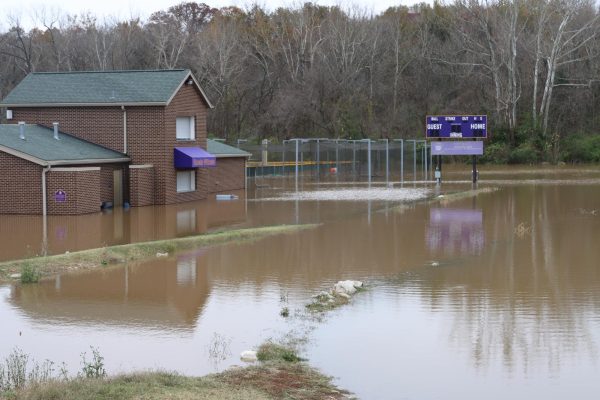
This is causing many major roads to close due to standing water. In Valley Park, Hwy 141 near Hwy 44 is flooded, and in Pacific Highways F and O are flooded. This can impact students and teachers, making it difficult or impossible for transportation to school or work.
Dr. Gary Jansen, assistant superintendent supervision of secondary education, came to EHS Thurs. Nov. 7, to assist with directing traffic and examine the flooded area.
“There’s some issues in Fenton because 141 is closed, so it’s a matter of staff members having to take alternate routes to get to work, but not impacting the school day whatsoever,” Jansen said. “Just moving lots of kids from their parking spaces to somewhere else on the lot and then making sure we have enough for everybody to park tomorrow.”
As the day goes on, the amount of land covered by water at the high school increases. Many district officials have visited the scene to ensure the safety of students. As of now, Nov. 7 12:30 pm, classes are still in session.
Tyrone Dennis, district safety supervisor, oversees the school district’s safety and security department. He was at EHS surveying the area, looking at the flood and planning the next steps.
“I basically report directly to Dr. Cain and our upper cabinet members, every safety measure needed. Every safety plan is my assignment. I also supervise all 17 School Resource Officers. We have 13 police officers from five police jurisdictions and four Rockwood safety officers, which makes up our safety team,” Dennis said. “Our district is large, 43 miles wide. We go from Fenton to the Valley. And so that’s my concern every single day, making sure you’re able to come in and get an education and not worry about anything.”
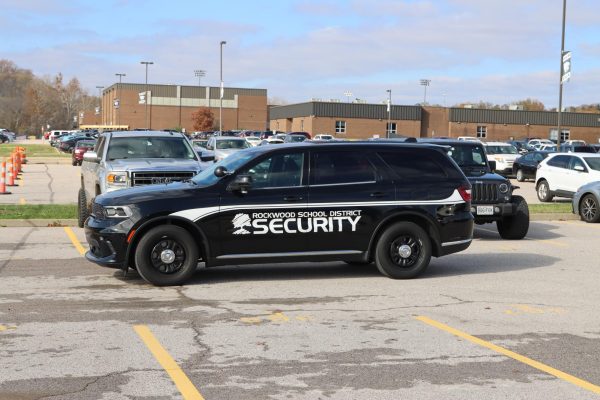
Eureka Quadrant Facilities Supervisor Austin Leuthauser, works collaboratively with other maintenance workers. They blocked off the area expected to flood, so students would not park there. They used different tools to predict where the water would rise.
“I think the first thing is to keep everybody safe. You know, there’s people themselves and their vehicles, and then I think they’re predicting the water’s gonna get to that second stretch of light poles,” Leuthauser said. “It’s supposed to get 2 more feet of water, but anywhere you look, all the information kinda changes a little bit. So it’s kinda like playing it by ear.”
Students who are affected by the flooded areas use their best judgment to decide what to do in times like these. Driving through still water is unsafe for cars because water can get into the exhaust system, causing cars to stop working.
“I think if there’s water in the building, that’s when it becomes an issue. But water in the parking lot, as long as there is adequate supervision, like we have out here today, and kids use a little bit of common sense, we should be good,” Jansen said. “But we just have to make sure that we have adequate access to get in and out, and kids just have to slow down and be a little smarter when they’re driving.”
Officer Derek Ploeger was stationed at the light near the north entrance with other officers directing traffic. This was in efforts to reduce the amount of traffic on Hwy 109. There are many people working diligently to ensure the safety and security of students affected by the flooding.

“So these guys will continue to monitor the water, and then where it’s coming up because they use levels. So they shot where the water is now,” Leuthhauser said. “And then imagine that if the water was up 2 feet higher, they were able to predict how far up onto the lot it could possibly go. They’re pretty smart about that. So then we’d be able to identify how many spaces we would not be able to use.”
Having limited entrances to the parking lot caused traffic back up, creating a chaotic morning for the staff at EHS. Administrators played a crucial role in ensuring safety and continuity of the day. Mel Lunda-Caruso, parking lot attendant, was also a major part in the flow of today.
“Well, you’re going to have to thank Dr. Sink for that because he was here early. We had a Veteran’s Day program (before school). And as soon as I arrived and noticed the water, I started going into action, and I waited for him, talked to him,” Lunda-Caruso said. “He called Facilities, arranged to have them bring out cones. I took cones and blocked off the entrance when they asked me to close the south gate. And he got the other administrators together and said, I need you here and here. Stopping kids, making sure they know where to go, and y’all did great.”







